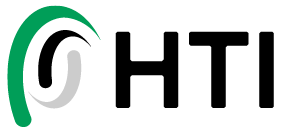The Ultimate Matchmaker: Using Behavior Analysis Tools in Recruiting
Selection and Organizational Development Tools
Why are some organizations more skilled than others in hiring successful employees for their teams and companies? For one, they have an understanding that the “right employee” simply means the right fit for them. This may or may not be the most impressive resume, or the most engaging interview. In short, great companies understand the importance of finding the right new hire for their organization. To do this, they rely on behavior analysis tools as a critical piece of the hiring and organizational development process.
The human resource world uses a variety of selection tools currently.
Organizations widely respect tools such as the Myers Briggs, The DISC, and the Predictive Index. At HTI, we have used the Predictive Index (PI) for many years as a behavior analysis tool. The PI helps us not only select the best-fit associates, but also helps in organizational development, mentoring, motivation, and in the scheduled formal review process. We begin to understand what motives this person. Is it a detailed work plan, an aggressive challenge, or a pat on the back and attaboy? As leaders, it is our responsibility to put our team members in position to be successful.
The PI is a highly validated behavior analysis tool.
Psychologists agree that there are four major behavioral drives in all of us. It’s how these needs fit together and the intensity of each that makes us uniquely who we are and drives how we work and interact with others.
In an interview, we see two things: a resume and a snapshot of a personality which is being managed for the moment. With the PI we see beyond the paper and acting skills. We understand the following and can ask follow-up questions based on the information at hand. We know if this person is:
- Passive and is most comfortable in a cohesive team environment, or a more aggressive self-starter who embraces conflict.
- Introverted and prefers solitude, or extraverted and craves people and the limelight.
- Highly impatient and needs multi-tasking, or a perfectionist with the patience to double and triple check their work for quality.
- An out of the box free thinker looking to build a better mouse trap, or a detail-oriented technician less likely to conflict with the proven methods.
Personality Diversity
It is well recognized that interviewers and hiring managers will subconsciously gravitate to people similar to themselves. So, if I am an engineering manager with a team of four engineers, they may likely all be like me – technical, but also introverted and non-aggressive. As I am interviewing for the next team member, perhaps what I need in order to optimize my team is more personality diversity. If I can find an engineer who although technical, may be more outgoing and creative thinking, I will have someone to not only bring creativity to the way we work and solve problems, but also someone who is more comfortable engaging verbally with clients, the rest of our organization, etc.
One reason I see teams and companies fail is because they do not properly enhance each other’s skill set.
Again, we can’t all work and solve problems the same way. Let us take a CEO whose gifts and talents lie in being strategic. She has a unique gift to visualize where the organization needs to be in two years, five years, etc. To be successful, she needs to surround herself with individuals whos gifts are in being tactical. Her role is to set the course of where the company needs to be. Her team will build the tactical steps to get them there. This is team optimization at its core, and the PI helps make this happen.
At HTI and with many of our clients, behavior analysis tools are critical to making the right hiring decisions, putting people in the right place, and building teams that enhance each other.
